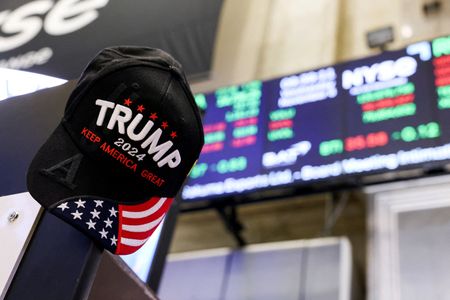Trump Unveils Tariff Plans
New tariff threats related to trade policies are emerging as Donald Trump prepares to assume the presidency. Trump has announced plans to impose a 25% tariff on products from both Mexico and Canada, as well as an additional 10% tax on goods imported from China.
Trump threatens tariffs on Mexico, Canada, and China The elected President of the United States, Donald Trump, announced that he would impose a 25% tariff on all products from Mexico and Canada as soon as he takes office on January 20. Trump also stated that an additional 10% tax would be applied on top of the existing tariffs for China. In a statement made via the social media platform Truth Social, Trump indicated that this move would remain in effect until the flow of drugs, particularly fentanyl, and illegal immigration is halted.
Trump asserted that Mexico and Canada are capable of solving these issues, remarking, “It’s time for them to pay a big price.” Additionally, he cited the insufficient efforts by China to combat drug trafficking as justification for the heavier tariffs. The Chinese Embassy has stated that there would be no winner in a trade war, arguing that cooperation is mutually beneficial.
Tensions rise between China and North America Trump's tariff plans are creating tensions with trade partners Mexico, Canada, and China, while comments from China suggest that such economic conflicts would be detrimental to both sides. Liu Pengyu, spokesperson for the Chinese Embassy in Washington, claimed that the nature of economic cooperation between China and the U.S. is mutually beneficial and that tariffs would escalate tensions.
Canadian Deputy Prime Minister Chrystia Freeland emphasized that her country prioritizes border security highly. Freeland noted that the U.S. and Canada are collaborating closely to address issues like drug trafficking. Furthermore, it has been reported that Trump and Canadian Prime Minister Justin Trudeau have discussed trade and border security over the phone.
What do economists think? It has been noted that Trump's tariffs could impact the existing trade agreement between the U.S., Mexico, and Canada. These countries are among the largest trade partners for the U.S., with a significant portion of their exports heading to the country. Economists argue that such tariffs could slow economic growth by increasing costs for consumers and businesses.
Economist Robert Reich stated that tariffs essentially act as a type of sales tax, disproportionately affecting low-income households compared to the wealthy. According to the Peterson Institute for International Economics, Trump's planned tariffs could result in an additional cost of over $2,600 annually for the average American household.
Path forward Trump's trade policies could also impact the future of the United States-Mexico-Canada Agreement (USMCA). Alex Loo from TD Securities suggested that Trump could pressure Canada and Mexico to negotiate the renewal of the USMCA alongside the tariffs. Wendy Cutler, Vice President of the Asia Society Policy Institute, remarked that since Mexico and Canada are dependent on the U.S. market, they have limited room to maneuver against Trump's threats.
Trump has also brought up plans to withdraw China's most favored nation status. Such moves could lead to further tensions in U.S.-China trade relations. It remains unclear what Trump's ultimate goals are, as well as which of his threats involving much higher tax rates will be actualized.


